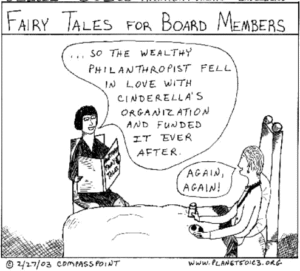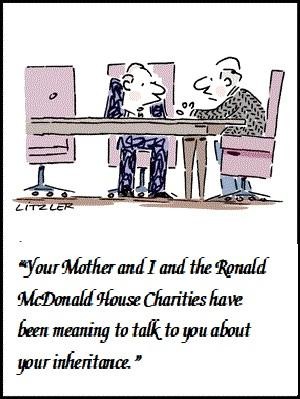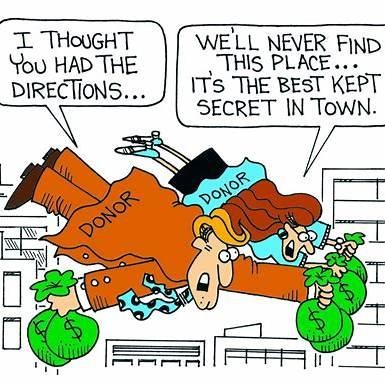At Ronald McDonald House Charities of Central and Northern Arizona (RMHCCNAZ), ensuring that families with critically ill children have a home away from home is at the heart of everything they do. But even organizations with a strong mission must look ahead to secure their future. That’s why we at The Huddleston Group are working with RMHCCNAZ to develop a robust Planned Giving Program—one that will provide long-term sustainability and ensure they can continue serving families for generations to come. If you’ve ever wondered how to start a Planned Giving initiative without a massive budget or dedicated staff, you’re not alone. Many nonprofits hesitate to dive into planned giving, thinking it requires complex legal structures or deep financial expertise. The truth is, any nonprofit can start building a planned giving program today, no matter its size. Planned Giving is one of the most underutilized yet powerful tools in fundraising. Here’s how your organization can begin securing legacy gifts—just as RMHCCNAZ is doing now. Planned giving doesn’t have to be complex or expensive to be effective. At The Huddleston Group, we specialize in helping nonprofits—regardless of size or budget—integrate planned giving into their development strategy, ensuring financial security for the long term.
Start with a Vision, Not Complexity
A successful Planned Giving Program doesn’t start with legal jargon or complex gift structures—it starts with a compelling reason to give. Donors don’t make legacy gifts because of tax benefits alone; they do it because they believe in the mission and want to leave a lasting impact.
It’s about impact. Before diving into the  technicalities, it’s essential to define what legacy giving means for your organization. What difference will these gifts make? How will they help sustain your mission? Your board, leadership team, and staff should be able to articulate this vision in conversations with donors. Planned giving is not just a financial transaction; it’s an opportunity for supporters to leave a lasting imprint on the world. Before diving into the mechanics of planned giving, ensure that everyone in your organization understands and can communicate the long-term vision.
technicalities, it’s essential to define what legacy giving means for your organization. What difference will these gifts make? How will they help sustain your mission? Your board, leadership team, and staff should be able to articulate this vision in conversations with donors. Planned giving is not just a financial transaction; it’s an opportunity for supporters to leave a lasting imprint on the world. Before diving into the mechanics of planned giving, ensure that everyone in your organization understands and can communicate the long-term vision.
Identify Potential Legacy Donors
One of the biggest myths in Planned Giving is that only wealthy donors leave legacy gifts. In reality, some of the most dedicated planned giving donors are those who have consistently given small amounts over many years. Look for donors who have:
- Given annually for 5+ years
- Made consistent annual gifts
- Expressed a deep emotional connection to your mission
These loyal supporters are often the most inclined to include your nonprofit in their estate plans.

I Educate Your Donors—Without Overcomplicating the Message
Many donors don’t realize how easy it is to make a legacy gift. A simple bequest in a will—just a few sentences—is the most common type of planned gift,
yet millions of Americans pass away each year without an estate plan. Your role is to educate donors about how planned giving works without overwhelming them with technical details. One of the most effective ways to introduce planned giving is through a well-crafted direct mail campaign. Start with three simple letters:
- Two bequest-focused letters, sent at different times of the year
- One Charitable Gift Annuity (CGA) letter, explaining how donors can receive lifetime income in exchange for a gift
Keep the messaging clear and compelling. Always include a self-addressed, prepaid return envelope—many donors will hold onto it until they’re ready to take action. This simple strategy ensures that you have an active planned giving marketing campaign in place.
Beyond direct mail, reinforce the message through:
- Newsletters and email updates featuring donor stories
- Website content with sample bequest language and FAQs
- One-on-one donor conversations to personalize the opportunity
Build a Simple Recognition Program
Donors appreciate being thanked and acknowledged—and recognition can inspire others to take action. Creating a Legacy Society is a simple yet effective way to cultivate future gifts. Consider establishing a Legacy Society to honor those who make estate gifts. Benefits could include:
- A special listing in annual reports or donor walls
- Exclusive invitations to appreciation events
- Personalized thank-you letters from your CEO
A little appreciation goes a long way in deepening donor commitment. Even something as simple as a phone call thanking a donor for including your nonprofit in their will can reinforce their decision and deepen their connection to your mission.
Make it Easy for Donors to Take Action
A planned giving program doesn’t require an in-house legal team, but it does require clear and accessible next steps for donors. The key to a successful Planned Giving Program isn’t complexity—it’s accessibility. A nonprofit doesn’t need a full-time planned giving officer or in-house legal team. It simply needs a clear, donor-friendly process.
Ensure your nonprofit’s website include:
- A dedicated Planned Giving page that explains bequests and other options
- Sample will language donors can share with their attorney
- A named contact person (not just an email form) so donors know who to call with questions

RMHCCNAZ: A Case Study in Planned Giving Potential
As Ronald McDonald House Charities of Central & Northern Arizona works with The Huddleston Group to develop a structured planned giving program, they are taking the necessary steps to secure their long-term future. By integrating legacy giving into donor conversations, identifying
engaged supporters, and creating a simple, donor-friendly process, they are setting the stage for success—and so can any nonprofit.</p
Want to Launch or Expand Your Planned Giving Program? We Can Help.
At The Huddleston Group, we specialize in helping nonprofits launch, grow, and sustain planned giving programs—no matter their size or budget. Whether your organization is just
starting or looking to strengthen an existing effort, we can provide the strategy, tools, and expertise needed to turn legacy giving into a lasting source of support. If your nonprofit is ready to explore planned giving, let’s start a conversation. The best time to start a Planned Giving Program is today. If your organization is ready to build its future, let’s start the conversation.
Contact us today to explore how legacy giving can work for you.
Ron J. Huddleston, CFRE, FAHP
President

